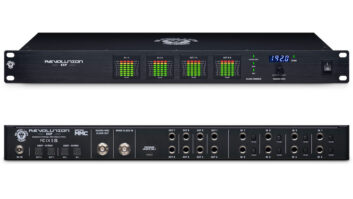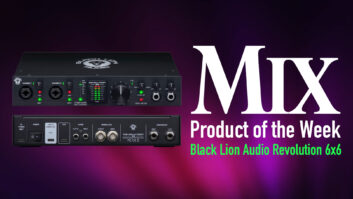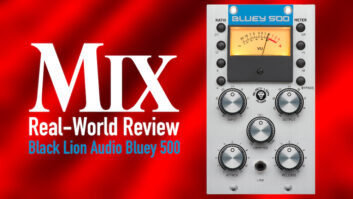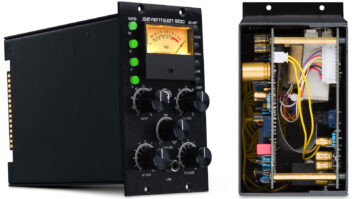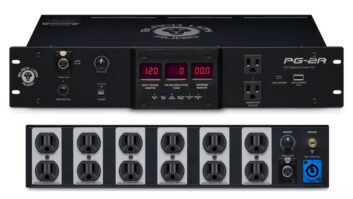To Clint Black, challenge is the name of the game. “You gotta have some of that going or you’re just going to go through the motions,” he says with a laugh.
Six studio albums deep into a very successful career, Black has decided to work without a net. He’s been very involved in all of his recording projects, but producer James Stroud was always there to bounce ideas off of and help make the decisions. D’lectrified represents Black’s first true solo flight. The title of the album also signifies Black’s assignment/concept: to make an unplugged album that sounds electric.
Why not just make an unplugged album that sounds unplugged? “That just didn’t sound hard,” Black says. “It sounded like something I could do in a week.”
Black started by cutting at Capitol Studios with a small group, giving them direction to fill up the track. “If you have your rhythm section plus fiddle, dobro and horns, everybody will be staying out of everybody’s way,” Black says. “I wanted the rhythm section to play hard and fill up the track.”
Engineer Julian King says that although nothing too unconventional occurred sonically, had they been recording a true acoustic album, the approach would have been different. “We went after aggressive textures from everything,” King says. “Typically, when you think of an unplugged album, you think of an acoustic guitar, a vocal and maybe some mandolin-pretty soft textures. We went after pretty tough drum sounds, for instance, and we didn’t use any samples or anything electronic. For a standard unplugged album, we would have normally used a smaller kit and softer textures, rather than using API mic pre’s and things like that, which, to me, have a little harder texture. I may have used some Neve mic pre’s and I probably would not have compressed things as much. I applied more ambient sounds, mixed with the close mics, so it was a fairly aggressive rock ‘n’ roll approach to the drums.
“It was a Neve VR console, and we also brought in some vintage Neve mic pre’s that we used for the kick drum,” King continues. “We used API mic pre’s for the snare drum and cymbals. As for microphones, we used some very standard and new things together-ATM 35 microphones for the toms and for the bottom snare mic. We used a KM84 on the hi-hat and Audio-Technica 4060s on the room ambient mics and Neumann 87s on the cymbals. [Drummer] J.R. Robinson has lots of cymbals. I don’t always put up three cymbal mics, but I spread three out over the cymbals this time, so I had three 87s set up with API mic pre’s, and I had an 1178 for a compressor on those things.
“We tried to stick acoustic instruments in slightly different roles than you would normally have in our market, to create the illusion of a bigger, more powerful track,” King says. “We didn’t try for the acoustic guitar to take the place of electric guitars. We still used the acoustic guitar as the rhythm source, and it’s playing a few fills on a few songs, but Clint went to some other textures to try to replace the electric guitar thing. He used horns on some songs and acoustic piano and some more unusual acoustic instruments to create like a pad-y kind of guitar. We used some dobro in some places, or he put some harmonic pad textures where he might normally have had some electric guitar. I used a vintage Neve 1081 mic pre on the acoustic guitar. We went back and forth with microphones on the acoustic guitar depending on the types of songs. We used an Audio-Technica 4050 on a few songs, and on a few songs we wanted almost a more old-timey feel, so we used an old Neumann U47. We useda Neve 33609 compressor for the acoustic guitar.”
Because horns are not used abundantly in country music, King rarely has the opportunity to record them. As a former horn player himself, getting to use some of the industry’s best horn players was a treat for the engineer.
“We tried not to put too many parameters or rules on it,” he says. “We just went for the texture that sounded right for it. Horns are horns-it’s not a traditional country element, but I think the arrangements that Clint and Jerry Hay worked on together helped create a mood that suits Clint, as opposed to it being a Tower of Power approach.
“On the horns we used all Neumann tube U67s recorded through the VR console, and we used compression and EQ in the board. That seemed to work great. Ricky Cobble, my assistant, did a bunch of overdubs for Clint also and they re-did the horns on ‘Burn One Down’ [with Edgar Winter] at Clint’s house through some 4060s and 4050s and the Yamaha console.”
As a producer, Black definitely has a clear vision of what he wants: “A lot of producers I’ve worked with have a hard time knowing or saying what they’re hearing,” King says. “Clint knows pretty quick if he’s getting close enough to what he’s hearing from whoever is on the other side of the glass. And then he’s good about being able to sing what he’s heard-a lick or a line or something. He does a great job of letting people know if it’s a rhythm pattern from the drummer, and he’s able to play a little bit of everything, so he’s able to use those tools to convey his thoughts to the players.”
Black replaced his scratch vocals at his home studio. “We have a vocal sound that works on Clint that is basically already set up for him at the house,” King explains. “It’s the tube 47 into the Tube-Tech mic pre, and he has a dbx 160X that’s plugged straight into the Pro Tools, so he can make track after track, one pass or 20. Or if he wakes up at 2 o’clock in the morning and wants to go downstairs and have at it, he can. We can go through it later and comp it or he may get the pass he loves in one shot. He’s pretty proficient at using the Pro Tools system.”
Waylon Jennings’ vocals on “Are You Sure Waylon Done It This Way” were recorded at Digital Insight Recording in Las Vegas to accommodate Jennings’ concert schedule. “I put down a copy of the song on ADAT and took it to Las Vegas,” Black says. “Waylon did a great job, and then I brought the tapes back and put it back onto my hard drive. We got that track in one take. We talked it through, did a start and got close to the first verse and then I said, ‘Hold on, let’s do this and that and when you do this, let’s do that.’ Then it was, ‘Okay, here we go,’ and we played it from top to bottom and that did it for me.”
This is Black’s first album to include cover tunes. “Part of what this album is about is influences,” Black explains. “I chose Waylon and Marshall Tucker because I wanted to exhibit the country influence, and then Leon Russell [“Dixie Lullaby”] and Monty Python [“Galaxy Song”] because I wanted to exhibit my influences outside of country. I’ve been listening to Leon Russell since I was 8 and Monty Python really speaks to my twisted sense of humor,” he says with a laugh.
Black also re-recorded new versions of a few of his own previously released gems. “Part of what was behind that thinking was how much I loved Clapton’s new version of ‘Layla’ [on Clapton’s Unplugged album],” Black says. “There’s always another way to skin a cat.”
Lisa Hartman (Black’s wife), who, heretofore, would not sing duets with her husband, joins him on “When I Said I Do.” Other guests include Marty Stuart, Steve Wariner, Edgar Winter, Monty Python’s Eric Idle, Bruce Hornsby and Kenny Loggins.
Right before this project, Black had two linked Yamaha O2Rs installed in his home studio. Stroud gave him a Formula Sound Q-8, an 8-channel individual mixer that Black likes to use when he’s cutting his vocals. King also carts a pair of newer Calrec modules from place to place.
“They have a mic pre and EQ and compressor all built into one rackspace, so when I record piano, I’ll use two of those with a couple of 4050s in the piano and then an 87 down at the bottom of the piano,” King says. “Then I’ll blend those three channels together to a stereo pair. I also took the Calrec modules over to Clint’s house for some overdubs, like Jerry Douglas’ dobro and the fiddle. We went back and forth between the 4060 and Clint’s tube 47, depending on the texture we needed for the song.”
They mixed at Record One, where King used an SSL 9000 for the first time. “I was real happy with how it mixed, but I struggled with the automation at first,” he says. “Clint put together a second Pro Tools system, so rather than dump everything back to tape, we mixed right out of the Pro Tools, which is something I had never done before. It gave him a lot of flexibility at mix time, so if there was something that needed a rise that was faster than I could do it with my hand, I could go in with the Pro Tools and raise it pretty easily-things I was not able to do as precisely with a fader and a finger. That way we could go in and look at it on a little more of a finite level. Clint listens very deep.”
To Black, that’s the fun of the role of producer, and one of these days he’d like to do it for other artists.
“It would have to be someone I was really into,” he says. “I feel like I could do it from the technical standpoint, but I’m not sure I could restrain myself from making a record that I want instead of a record the artist wants. It would be challenging to control myself, but it would be really exciting. I’d love to direct a video for someone else, too. There are so many things I want to do, which is why I feel as though there is always going to be something out there that will keep me interested and driven. You hear a lot of talk about the word ‘formula,’ and while I always consider myself not formulaic, in truth, that is my formula-to keep throwing myself a curve ball. That, in itself, is a formula that works for me and keeps me happy.”


